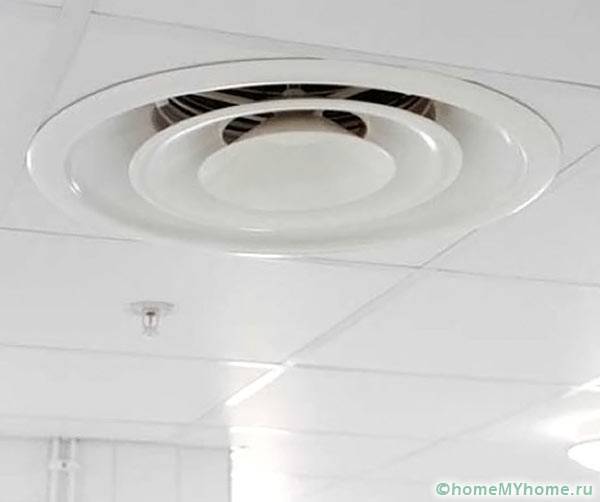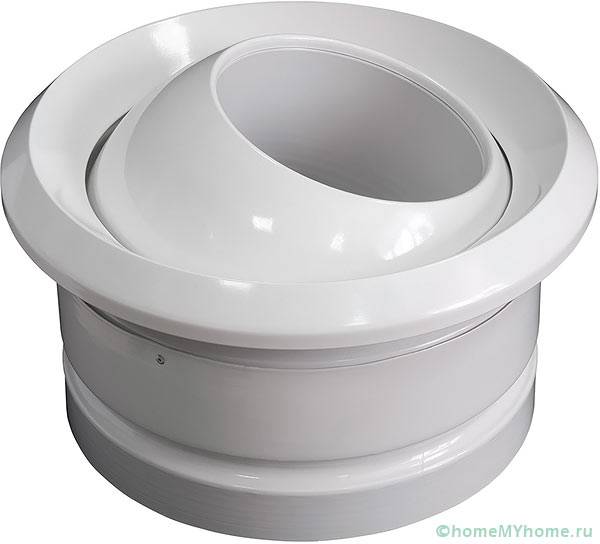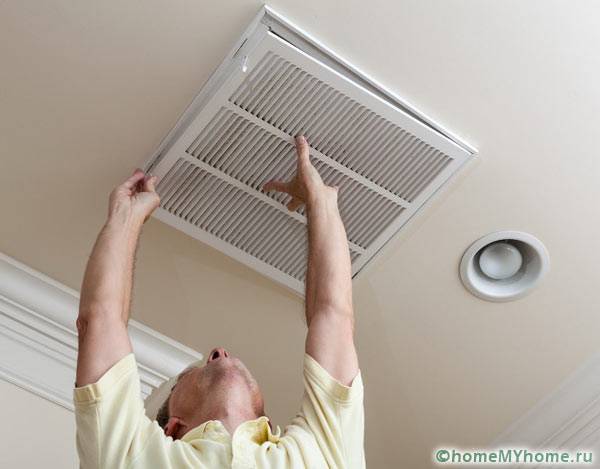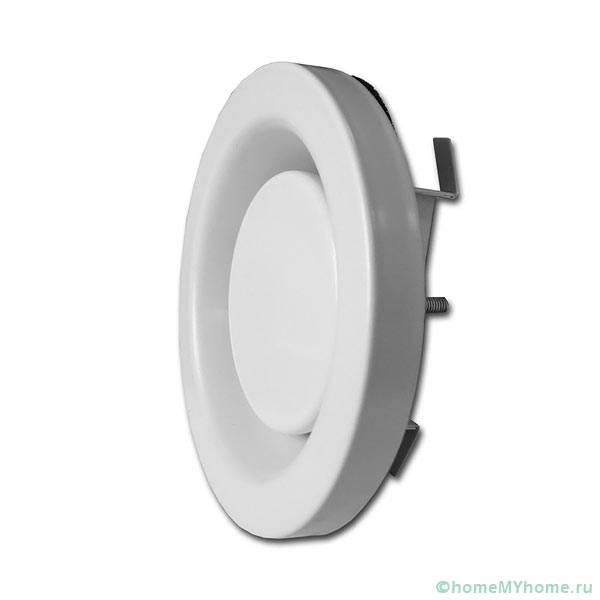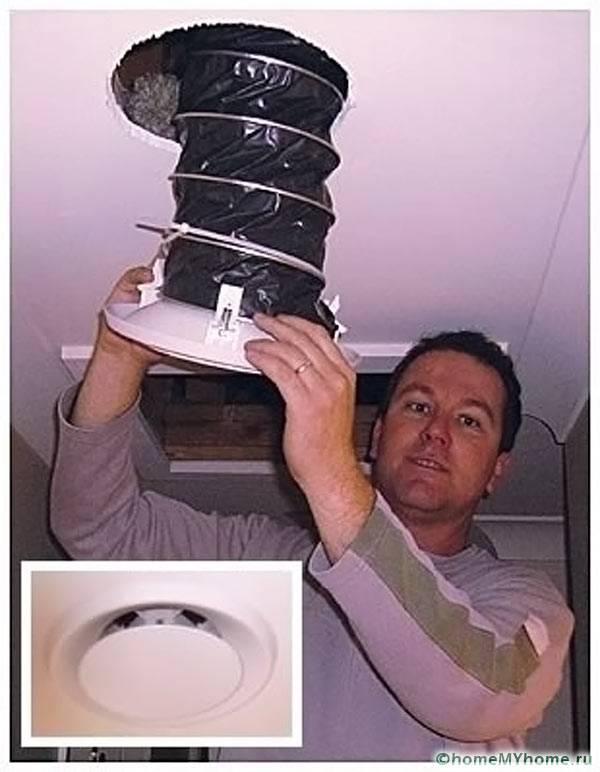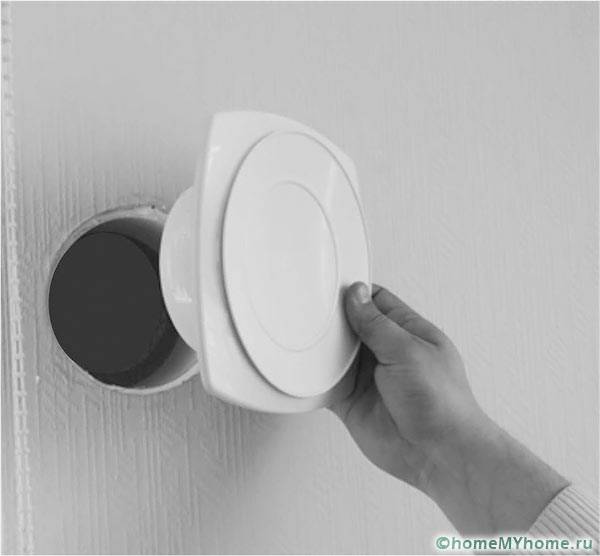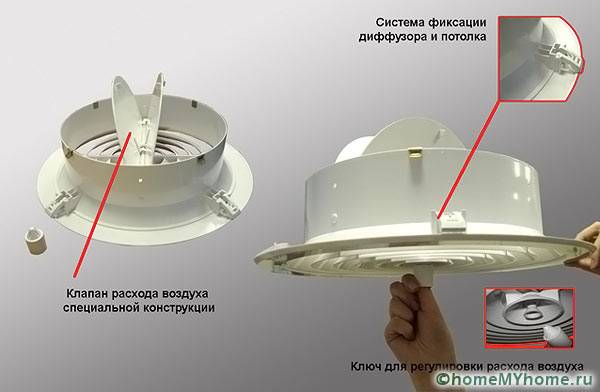Diffusers for ventilation: types and principle of operation
TOThe efficient operation of ventilation is possible only if it is a balanced system in which diffusers perform a very important function. They distribute the supplied air and regulate the incoming flow rate. Thanks to a wide range of design options, ventilation diffusers will effectively fit into any interior and provide full ventilation of the room. From the article, you will learn how to use and select these devices, as well as their price.
The content of the article
What does a diffuser do
For effective ventilation of any room, it is necessary that the supplied air does not flow in a stream, but diverges in different directions. If the air enters in one stream, then drafts appear in the room, which negatively affect people with weak immunity. In addition, only a small area of the room is ventilated in the direction of the jet. To avoid this phenomenon, it is necessary to diffuse the jet, forcing it to cover the entire room. This task is performed by diffusers for ventilation. Depending on the model of execution, they break the jet in different ways, the main ones of which are: dispersion and swirl.
This effect is no less important for exhaust ventilation... The vent creates a vacuum, however, the more the direction of movement of the air molecules changes relative to the direction of the channel, the less air enters it. Because of this, the bulk of the air flows parallel to the channel, that is, the same jet is formed.
Useful advice! Don't think of a diffuser as just an interior element. Installing it will significantly improve ventilation and protect you from drafts.
Exhaust air diffusers work in the same way as air supply devices, thanks to which the maximum room area... The devices that dissipate the flow do not allow the formation of a single jet, because the discharge at their output is formed in different directions. Vortex devices also draw air in a circle, thereby eliminating the formation of a single jet. All this leads to high-quality air removal from the room. In addition, the diffuser of exhaust ventilation systems also diffuses the incoming air flow.
Nozzle diffusers are designed to create a narrow directional air flow. They are used if it is necessary to supply air over a long distance, but it is impossible to lay an air duct there. To some extent, various grilles and louvers can also be attributed to diffusers, which protect the ventilation from foreign objects and diffuse the incoming or outgoing air flow. There are also diffusers that allow you to vary the rate of air supply or removal. This function is realized with a mechanical drive.
Diffuser types
All devices of this type are distinguished by:
1. Case material:
- metal;
- plastic.
2. Appointment:
- supply air;
- exhaust;
- nozzle;
- regulating air supply.
3. Place of installation:
- ceiling;
- wall.
4. Registration:
- rectangular;
- round.
Video: Hidria OD 11 variable swirl diffusers
Installation of diffusers
All diffusers for ventilation, photos of which are posted in online stores, are installed in specially prepared places that correspond to them in size and shape. Special latches on the body of these devices ensure their fixation. These devices are installed both in conjunction with flexible air ducts (sleeves) and into tin channels.
Helpful information! To install diffusers without problems, carefully select them in shape and size. In order to blend harmoniously into the interior, choose carefully by color.
Installation of diffusers in a rigid duct (box)
Determine the size and shape of the socket, then find the appropriate diffuser in the store. Insert the diffuser into the slot and push gently until you hear a click. Check if any edge of the diffuser is protruding from the wall or ceiling surface. If it does protrude, gently push it down to release the latch.
Installing the diffuser into the soft channel (sleeve)
Pull out your sleeve ventilation from the channel and attach a diffuser to it. Then carefully insert the sleeve into the channel, then the diffuser. When it comes to the stop, gently push it down to release the latches. Check for any edge protruding from the wall surface. If protruding, gently push it in to engage the latch.
Installation of the diffuser in ductless exhaust ventilation (hole in the wall)
To install a diffuser, you must first mount the diffuser socket. It is advisable to use a ventilation pipe with a seat for installing this device as a socket. You can buy these pipes at any home improvement store. Measure the distance from the inside to the outside of the wall, then cut a piece of pipe to the same length. Insert this piece into the hole and secure with foam. When the foam is dry, cut it off and insert the diffuser as described above.
Helpful information!It is not uncommon to find diffusers that are not equipped with latches. They are fastened using self-tapping screws, anchors or glue.
How much do diffusers cost
All exhaust ventilation diffusers, as well as any other type of these devices, are inexpensive. Their price starts from 100 rubles for small devices and reaches several thousand rubles for diffusers with a diameter of 40-60 cm.The type of device does not greatly affect its cost, and a loud brand meaning that the diffuser was produced by a reputable European company can increase the price by 2–3 times. In this case, there will be no difference in the distribution of the air flow between them.
Video: test of the slot diffuser







